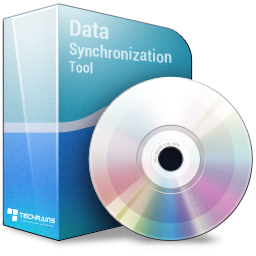A Software Product of Techrains. Reliable and quicker Data Synchronization
Techrains Data Synchronization Toolaids you tosynchronize data across various databases.In Current day business there are many cases that exist wherein data is managed by separate applications in separate databases. Problem that the business is facing today is to have consistency of data across these systems. As the volumes are also growing the data has to be synched online and also at a quicker pace. Techrains Data Synchronization Tool helps in maintaining consistency of data across systems. This data movement can be unidirectional or bidirectional. |
 |
Current Situation:Data Synchronization tools that exist in market have latency issues and data will be synchronized as a day end process. With this there is always a lag of one day and in certain cases where volumes are high these processes can take more than a day to complete. Application connect to backends which are heterogeneous. data is stored in legacy systems, Hierarchial databases, RDBMS, files, mainframe systems etc..Data structures that need to be synchronized require complex mappings between sources and targets, as well as aggregations, calculations, etc. |
|
|
|
 |
|
Architecture |
|
 |
|
Techrains Data Synchronization Tool
|
|